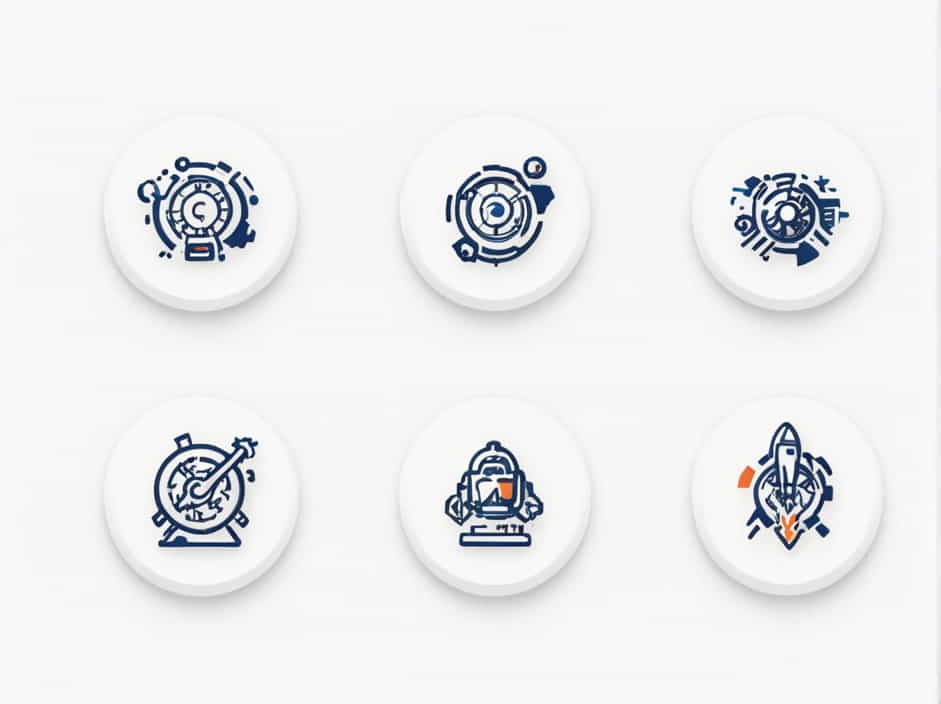Astronautical engineers play a critical role in the design, development, and operation of spacecraft. They work on everything from rockets and satellites to space probes and space stations. However, working in space is extremely challenging due to the harsh environment, complex physics, and high costs.
In this topic, we will explore some of the biggest challenges astronautical engineers face and how they overcome these obstacles.
1. Extreme Conditions in Space
1.1 Radiation Exposure
Space is filled with high levels of radiation from the Sun and cosmic rays. Unlike Earth, which has a protective atmosphere and magnetic field, spacecraft and astronauts are exposed to these harmful rays.
-
Effects on Electronics: Radiation can cause electronic systems to fail or malfunction, requiring the use of radiation-hardened components.
-
Effects on Humans: Long-term exposure to space radiation can increase the risk of cancer, radiation sickness, and genetic damage.
1.2 Extreme Temperatures
Spacecraft experience extreme temperature variations. In direct sunlight, temperatures can exceed 250°F (121°C), while in the shadow of a planet or spacecraft, they can drop to -250°F (-157°C).
-
Engineers must develop advanced thermal control systems to manage these fluctuations.
-
Special materials and coatings are used to reflect or absorb heat as needed.
2. Designing for Weight and Efficiency
2.1 Weight Constraints
Every kilogram added to a spacecraft increases launch costs significantly. Engineers must find a balance between strength, durability, and weight efficiency.
-
Using lightweight materials like carbon composites and titanium helps reduce mass.
-
Engineers use computer simulations to optimize designs and remove unnecessary weight.
2.2 Fuel Efficiency
Traditional chemical rockets require huge amounts of fuel, making launches expensive. Engineers are exploring alternative propulsion systems to improve efficiency:
-
Ion thrusters: Use electric fields to accelerate ions, consuming less fuel but providing lower thrust.
-
Nuclear propulsion: Can provide longer mission durations for deep-space exploration.
3. Spacecraft Reliability and Durability
3.1 Long-Term Mission Reliability
Spacecraft must operate for years or even decades without direct maintenance. Any failure in space can lead to mission failure.
-
Engineers conduct extensive testing on components before launch.
-
Spacecraft include redundant systems to prevent single-point failures.
3.2 Micrometeoroid and Debris Impact
Space is full of micrometeoroids and space debris, traveling at speeds of over 17,000 mph (27,000 km/h). Even small ptopics can cause serious damage.
-
Spacecraft are equipped with protective shields, such as Whipple shields, to absorb impacts.
-
Engineers track space debris and adjust spacecraft orbits when necessary.
4. Communication and Navigation Challenges
4.1 Delayed Communication
For missions beyond Earth orbit, communication delays become a major issue. Signals take:
-
1.3 seconds to reach the Moon.
-
4 to 24 minutes to reach Mars, depending on its position.
-
Over an hour to reach outer planets like Jupiter or Saturn.
To solve this, engineers:
-
Develop autonomous navigation and onboard decision-making systems.
-
Use AI and machine learning to help spacecraft operate independently.
4.2 Maintaining Signal Strength
As spacecraft travel further, their signals weaken. NASA and other space agencies use Deep Space Network (DSN) antennas to communicate with distant probes.
-
High-gain antennas and advanced signal processing help improve transmission quality.
-
Future missions may rely on laser communication for faster data transfer.
5. Human Factors and Life Support
5.1 Psychological and Physical Challenges
Astronauts on long-duration missions experience isolation, stress, and muscle atrophy due to microgravity. Engineers must design systems to:
-
Provide exercise equipment to prevent bone and muscle loss.
-
Create psychological support programs for astronauts on deep-space missions.
5.2 Life Support Systems
Spacecraft must sustain human life by providing oxygen, water, and food while removing carbon dioxide and waste.
-
Closed-loop systems recycle air and water to reduce supply dependency.
-
Advanced hydroponic or aeroponic farms may be used for growing food on long missions.
6. High Costs and Budget Constraints
6.1 Expensive Development and Launches
Space missions require billions of dollars in research, testing, and launch costs. Engineers must:
-
Find ways to reduce costs using reusable rockets (e.g., SpaceX’s Falcon 9).
-
Develop miniaturized satellites that offer cheaper alternatives for scientific research.
6.2 Securing Funding
Many space projects rely on government budgets and private investors. Engineers and scientists must:
-
Justify costs with potential scientific or commercial benefits.
-
Work on collaborations with private space companies to share costs and technology.
7. Challenges in Future Space Exploration
7.1 Colonizing the Moon and Mars
Long-term space missions require self-sufficient habitats. Challenges include:
-
Radiation shielding for human safety.
-
Developing 3D-printed structures using local materials (lunar or Martian regolith).
7.2 Mining Asteroids for Resources
Asteroid mining could provide valuable metals and fuel, but it poses challenges:
-
Navigating and landing on small, low-gravity objects.
-
Extracting materials without damaging mining equipment in microgravity.
7.3 Interstellar Travel
For future deep-space missions, new propulsion technologies are needed:
-
Fusion and antimatter propulsion could provide faster travel times.
-
Breakthrough Starshot proposes using laser-powered light sails to reach nearby stars.
Astronautical engineers face numerous challenges, from designing lightweight spacecraft to ensuring human survival in deep space. The harsh environment, communication delays, high costs, and technological limitations require constant innovation and problem-solving.
Despite these challenges, advancements in AI, robotics, propulsion, and space habitats are paving the way for future space exploration and colonization. As technology evolves, astronautical engineers will continue to push the boundaries of what is possible beyond Earth.
